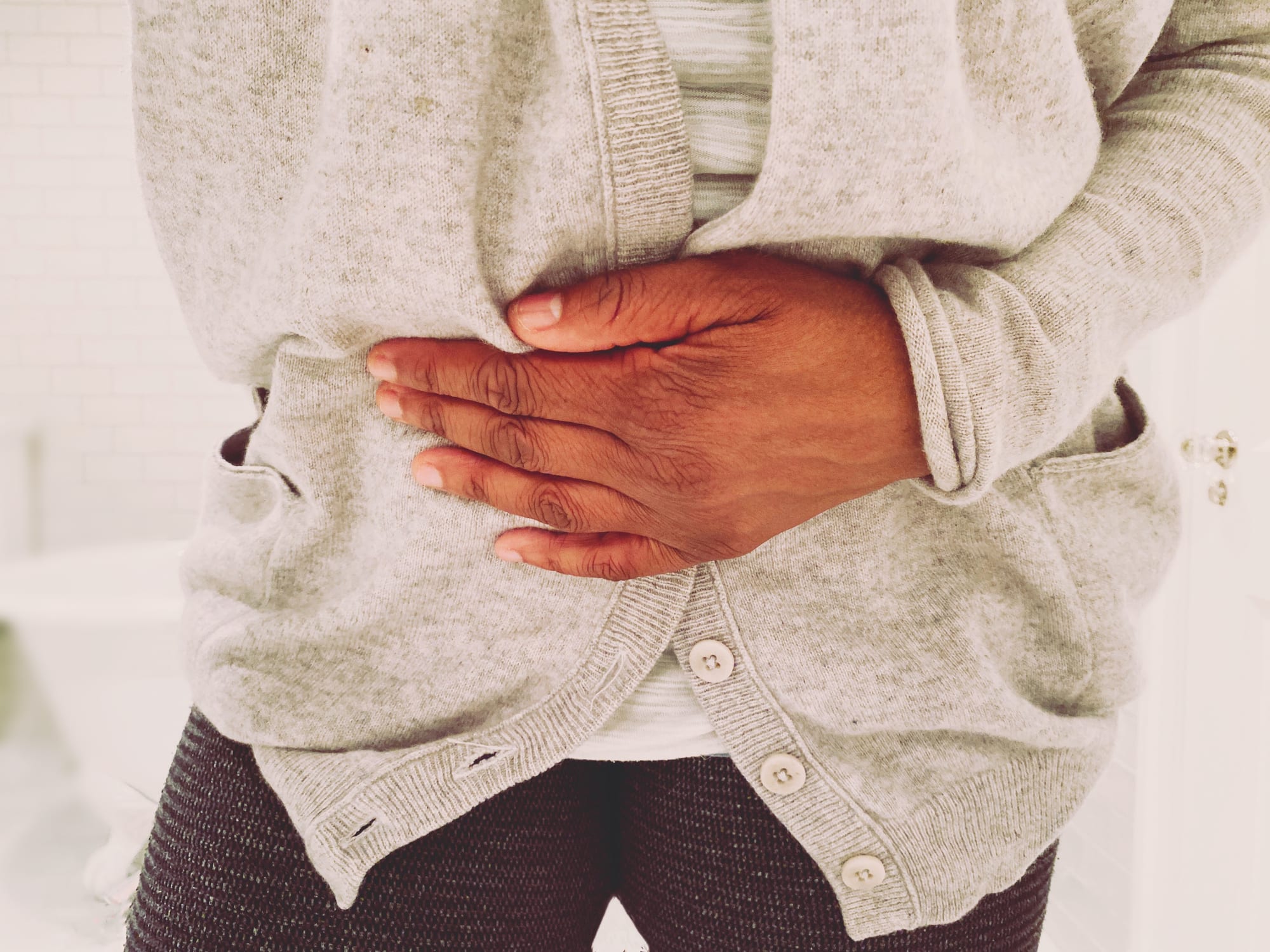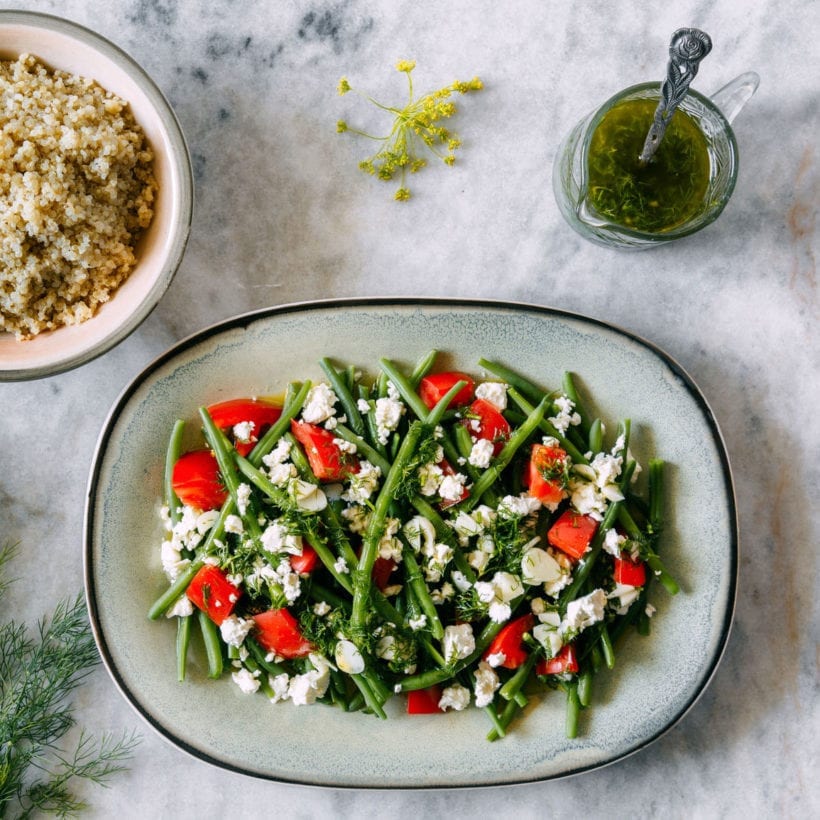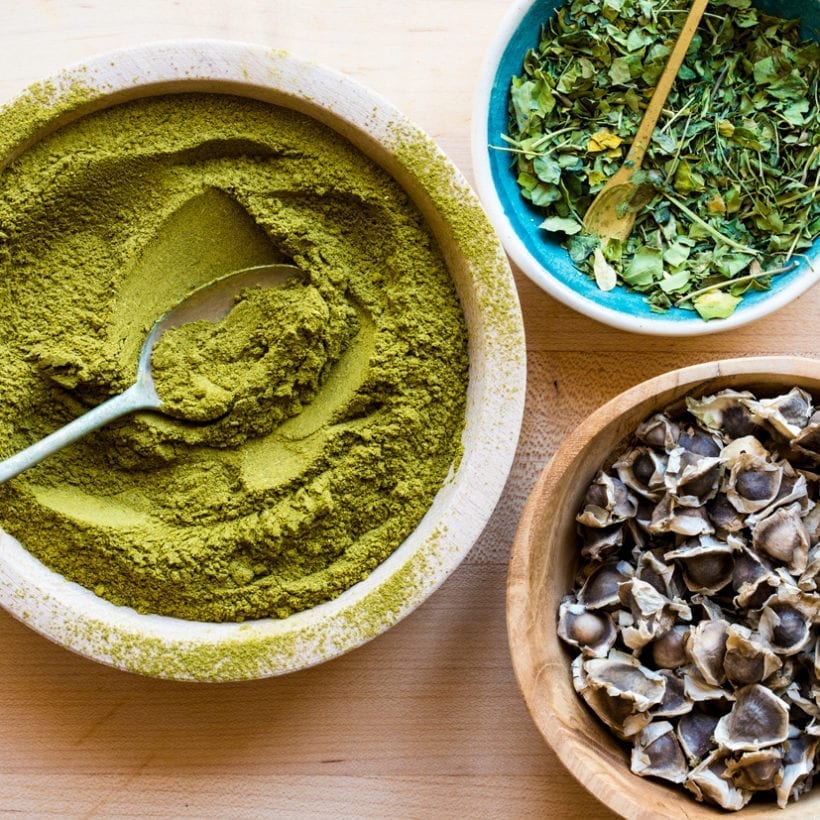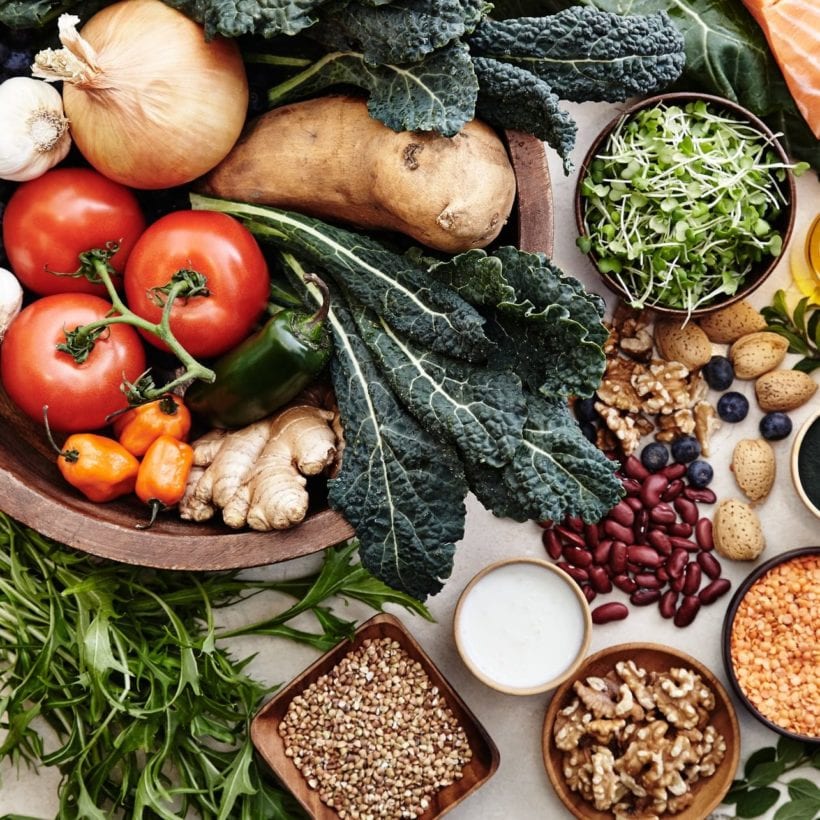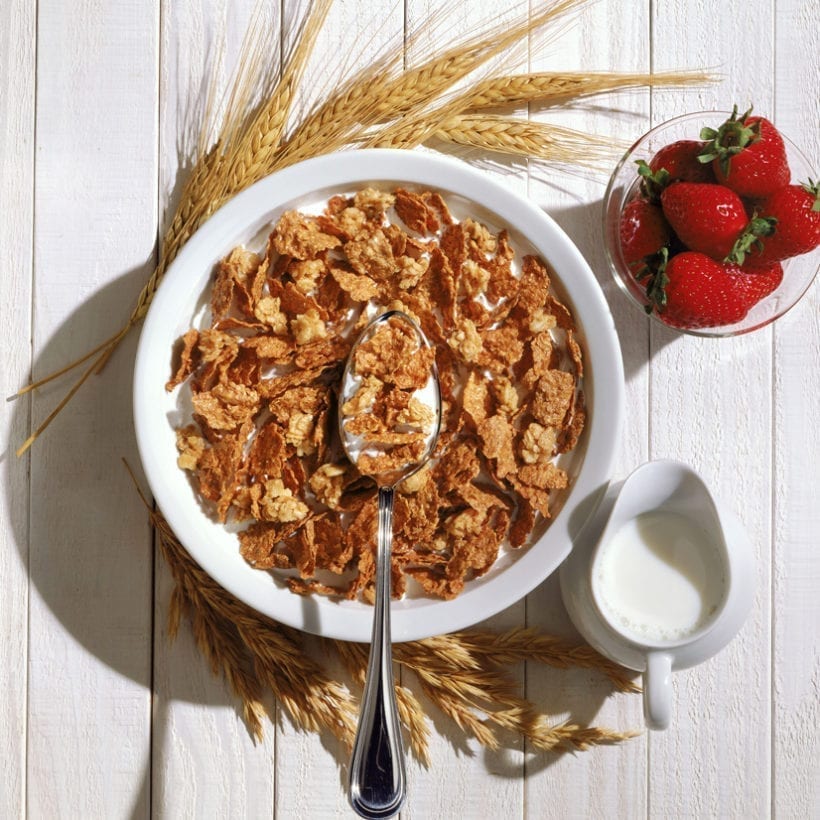You know the classic Pepto Bismol jingle? “Nausea, heartburn, indigestion, upset stomach, diarrhea.” It’s the story of my life. One year it got so bad and so frequent that I was convinced that something was seriously wrong with my stomach. One endoscopy and one colonoscopy later, it turns out my diagnosis was run-of-the-mill IBS a.k.a. Irritable Bowel Syndrome. A diagnosis like this can give you a lot of relief (“I’m glad it wasn’t something worse”), but also annoyance (“uh, that’s it?”).
There actually isn’t a test that can specifically diagnose IBS — it’s pretty much what your doctor will narrow it down to if you’re experiencing symptoms (bloating, gas, changes in bowel movements like diarrhea/constipation, and cramping) and they’ve ruled out everything else. Even though IBS affects up to 15% of adults, unfortunately, we’re still not really sure what causes it. It’s possible that genetics has something to do with it, or it can be amplified by stress, gastrointestinal infections, or hormonal changes from your period. “Oftentimes, IBS is caused by dysbiosis or an imbalance of gut bacteria,” says Dr. Michelle Green DC, who specializes in holistic health, clinical nutrition, and functional nutrition. There are different kinds of IBS based on your main symptom: IBS-D is when you have diarrhea and loose stools, IBS-C when you have constipation, and IBS-M where it’s an alternating mix of both.
There’s not a “cure” for IBS, either. Your doctor may recommend over-the-counter medications like Pepcid or Prilosec to immediately ease discomfort. But, if you’re looking for long-haul relief or you want to know what triggers to avoid, some people are able to control and improve their IBS symptoms by managing their diet, as certain foods can set off your symptoms. One such way to narrow down your triggers is by practicing the FODMAP diet.
What are FODMAPs?
“FODMAPS is an acronym for different types of foods that can cause IBS symptoms and are hard for people with IBS to digest these foods. FODMAP stands for fermentable oligo-, di-, mono-saccharides and polyols,” says Green. These are types of carbohydrates that some people have a tough time digesting — or they’re completely resistant to digesting at all. As these carbs are being turned into energy for your body (great!), they can also lead to hydrogen gas, bloating, and all the other classic IBS symptoms (not so great).
What are foods that are high in FODMAPs?
Wheat is one of the most popular culprits to IBS sensitivity, but it’s not the only ingredient that’s a common source of FODMAPs. Here’s an extensive list of the potential IBS food triggers:
- Fruits, berries: Apples (including applesauce), apricots, blackberries, boysenberries, cherries, corn, dates, figs, mango, nectarines, peaches, pears, plums, pomegranates, prunes, watermelon. Any canned fruit that’s soaked in fructose, dried fruit, and fruit juice are also high in FODMAPs.
- Dairy: Buttermilk, cream, custard, ice cream, margarine, milk (cow, goat, or sheep), any soft cheese, sour cream, and yogurt (including Greek yogurt). FYI: Even dairy substitutes like oat or soy milk are considered high in FODMAPs.
- Grains: Barley, biscuits, bread, (most) cereals, couscous, crackers, farro, pancakes, pasta, rye, semolina, tortillas, waffles, and wheat.
- Legumes: Baked beans, Black-eyed peas, chickpeas, kidney beans, lentils, lima beans, pistachios, soybeans, and split peas.
- Sweeteners: Agave, fructose, high fructose corn syrup, honey, isomalt (what you typically see in cake decoration), maltitol (usually found in gum, baked goods, and sugar-free chocolate), mannitol (found naturally in fruits and veggies, but also in chocolate coatings and gum), molasses, sorbitol (found naturally in fruits, but can be manufactured to sweetens foods and beverages), and xylitol (also found in fruits, but is widely used in gum and candy).
- Vegetables: Artichokes, asparagus, broccoli, beets, Brussels sprouts, cabbage, cauliflower, celery, garlic, fennel, leeks, mushrooms, okra, onions, peas, scallions (the white part), shallots, snap peas, snow peas, and sweet potato.
You’ll also want to be mindful of your beverages. In addition to fruit juice and milk outlined above, beer, soft drinks with high-fructose corn syrup, teas, and alcohol are also high in FODMAPs. Additionally, carbonated drinks (even plain, sparkling water) can be irritating to people with IBS.
Why should I do a low-FODMAP diet?

“This diet has been shown to benefit about 75% of people with IBS. The great thing about it is that you can start seeing relief from symptoms within a couple of weeks and it offers a long-term solution. It has been shown to help people with IBS have less gas, bloating, diarrhea, constipation, and stomach pain,” says Green. Overall, it could lead to a better quality of life and an improvement in your mood when you’re not dealing with the stress of tummy issues. “There is no better time than now to focus on improving your health,” she says. Since we’re in a pandemic and most of us are homebound, it’s easier to eat at home and have control over what you’re eating, as opposed to the social pressure and temptations you might face when eating out regularly with friends.
So, what can I eat on a low-FODMAP diet?
It seems like we listed every ingredient as high in FODMAPs, but there is still a good, delicious variety that you can choose from if you decide to pursue a low-FODMAP diet. There are apps like Fast FODMAP Lookup & Learn that will help you quickly learn if a food is friendly for your new diet and keeps you accountable with a food diary.
If you want to follow low-FODMAPs strictly, you’ll want to work with a dietician to figure out the best game plan (for example, figuring out exactly how much of these foods you can eat on a daily basis, as it can vary by ingredient), but here’s a general guideline on what you can have:
- Fruits, berries: Avocado, bananas, blueberries, cantaloupe, grapes, grapefruit, honeydew melon, kiwi, lemons, lime, mandarins, oranges, papaya, passionfruit, pineapple, raspberries, rhubarb, and strawberries.
- Dairy: Almond milk, coconut milk, hemp milk, and rice milk. You can have butter. You can eat hard or aged cheeses (think: blue, brie, feta, manchego, parmesan, pecorino). As a rule of thumb, the “fresher” the cheese, likely the more lactose it’ll contain. Otherwise, you’ll have to stick with lactose/dairy-free products.
- Grains: Brown rice, maize, millet, oats, polenta, rice, quinoa, and tapioca — plus, anything that’s gluten-free is fair game.
- Legumes & Seeds: Almonds, Brazil nuts, cashews, chia, hazelnuts, Macadamia nuts, peanuts, pecan, pine nuts, pumpkin seeds, sesame seeds, sunflower seeds, and walnuts.
- Sweeteners: Beet sugar, brown sugar, cane sugar, coconut sugar, icing sugar, maple syrup, raw sugar, table sugar, and most artificial sweeteners like Stevia.
- Vegetables: Arugula, bamboo, bell peppers, bok choy, carrots, collard greens, cucumbers, eggplant, endive, fennel, ginger, green beans, kale, lettuce, olives, parsnips, potatoes, radishes, scallions (green parts), spinach, squash, sweet potatoes, Swiss chard, tomatoes, turnips, yams, water chestnuts, and zucchini.
- All meat, fish, and eggs: Including beef, chicken, lamb, pork, shellfish, and turkey.
- Plant-based proteins: Including tofu and tempeh.
- Any fats or oils
- Any herbs/spices: Plus, condiments like pepper, salt, and mustard are fine. However, some people find they’re sensitive to chili.
Beverage-wise, in addition to your lactose-free milks, sticking to water and coffee is best. Though more than three cups a day of caffeine can be a trigger.
What does a sample menu for a day look like?

“It’ll be helpful to always have the following items ready in your pantry and refrigerator: dairy-free milk alternatives, sprouts, bell peppers, cucumbers, lettuce, tomato, zucchini, potatoes, turnips, oranges, grapes, banana, grapefruit, lemon, lime, strawberries, eggs, rice, oats, chicken, quinoa, gluten-free bread and pasta, almonds, and walnuts,” says Green.
A sample day of your meal plan could look like this: “Oats with strawberries and bananas for breakfast. For lunch, try a quinoa bowl with sprouts, bell peppers, cucumbers, tomato, zucchini with grilled chicken for added protein. As a snack, make a fruit smoothie. Then for dinner, do a brown rice noodle and veggie stir fry. You can add a protein, such as chicken or pork, to this as well,” suggests Green.
How do I start a low-FODMAP diet?
Here’s where we’re going to stress the importance of seeking a pro’s guidance if you want to do a low-FODMAP diet correctly. “The first step is a restriction for four to six weeks of all high-FODMAP foods. You will then slowly reintroduce certain groups of FODMAPs back into your diet — one every three days or every week is a good time frame. You will see if you have any type of IBS reaction to that particular ingredient/food. This can help you determine which groups of FODMAPs you might be sensitive to the most. Most likely, you aren’t sensitive to all of them,” says Green.
As you reintroduce one high-FODMAP food at a time, you’ll still have to follow the low-FODMAP diet for the rest of the food you eat. “You’ll then be able to personalize your diet to include high-FODMAPs that you can tolerate and just customize a diet that doesn’t include the FODMAPs that you are sensitive to,” she says. You’ll also be able to discover your threshold levels a.k.a. how much of your high-FODMAP foods you’re able to tolerate. For instance, you might find you’re able to tolerate a half-cup of artichokes, but anything more than that sets off your stomach.
What’s the downside to a low-FODMAP diet?
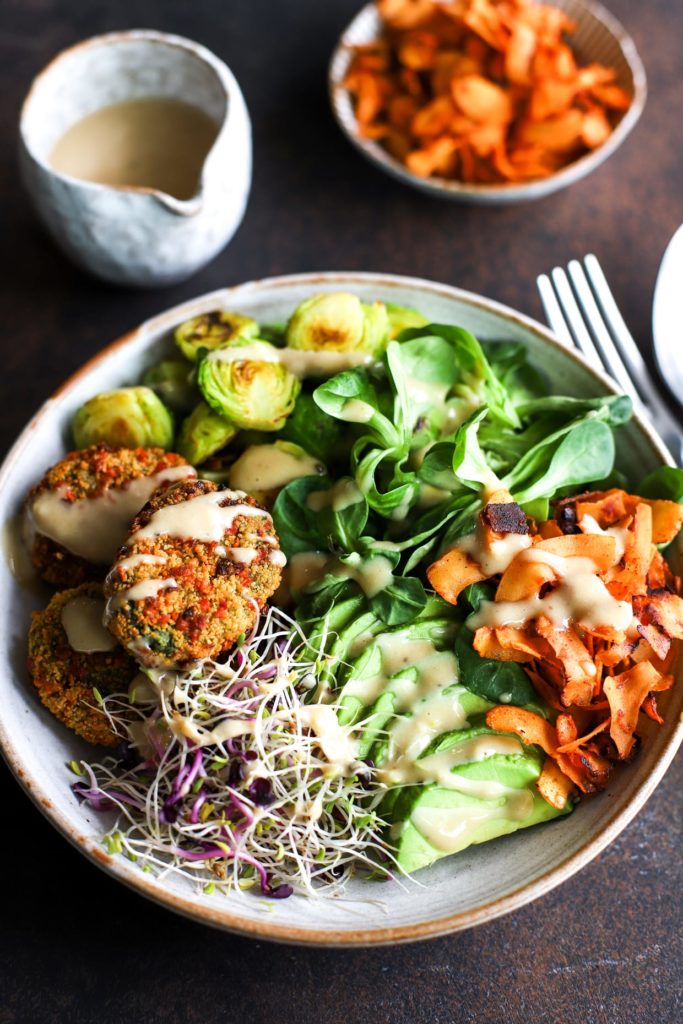
“A low-FODMAP diet can be hard for people who already have a restrictive diet. However, it is doable for anyone on any type of diet, even vegetarian. It will just be very restrictive,” says Green. While you can lose weight on this particular diet, that shouldn’t be the goal. “You want to make sure that you have IBS if you go on this diet. This diet is also not meant to be practiced long-term because of how restrictive it is,” she says. Plenty of high-FODMAP foods are important for your gut health, so it’s not ideal to avoid them long-term if you can tolerate them. “Don’t be scared to go back to a regular diet once you do the low-FODMAP diet. Sometimes people think the symptoms will come back, but as long as you were doing it correctly, you should be able to identify your trigger foods.”
Can I still eat out or order takeout?
Eating out when you’re trying to avoid high-FODMAP foods can be challenging. “It is always a good idea to research the menu beforehand so you’re not stressed to make a decision on the spot when you’re ordering,” says Green. “Garlic and onions are the most common foods that sneak into restaurant foods without listing them on the menu item’s description so make sure to ask about these. If you can find yourself at a restaurant that offers dairy-free and gluten-free options, that helps as a good place to start,” she says.
What should I do if it’s not helping my IBS?
“A low-FODMAP diet is a great, relatively quick way to help IBS symptoms in the long run. It’s super effective and works for most people,” says Green. There could be sneaky ways that trigger foods are sneaking their way into your meals, especially if you eat out often or have someone else cook for you. It’s not going to be successful if you only eliminate a few of the high-FODMAP ingredients — it has to be all of them. Keep a food journal for those six weeks to help you stay on track and alert your dietician of any red flag. “If the diet is not working for you, then there may be something else going on. Reach out to your healthcare professional to see what could be happening,” says Green.
